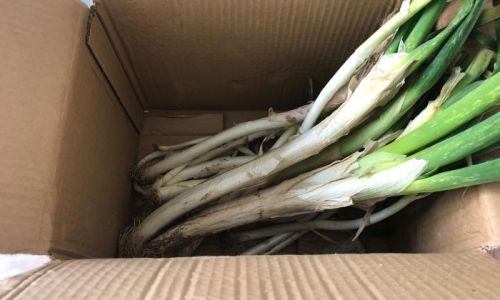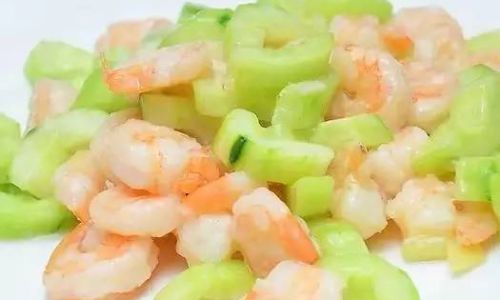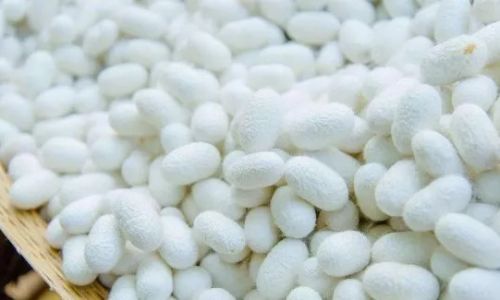Table of content
Green onions, also known as scallions or spring onions, are a staple in kitchens worldwide. Their mild, oniony flavor and crisp texture make them a versatile ingredient in salads, soups, stir-fries, and garnishes. However, like many fresh produce items, green onions require proper storage to maintain their quality and prevent spoilage. One question that often arises among home cooks and food enthusiasts is: Can green onions be refrigerated? This article explores the science behind refrigeration, the best practices for storing green onions, and whether the cold environment of a refrigerator is truly beneficial for preserving their freshness.
Understanding Green Onions: Composition and Spoilage
Before diving into storage methods, it’s essential to understand what makes green onions unique. Unlike bulb onions, which have a thick, papery skin and a long shelf life, green onions are harvested young, with slender green stalks and small white or purple bulbs. Their structure consists of approximately 90% water, with the remaining 10% comprising carbohydrates, vitamins (such as C and K), and minerals like potassium. This high water content makes them perishable, as moisture loss accelerates wilting, while excess moisture can lead to rot.
Spoilage in green onions is primarily caused by three factors:
- Ethylene Gas: Produced by some fruits and vegetables, this hormone-like compound accelerates ripening and decay.
- Microbial Growth: Bacteria and fungi thrive in damp environments, leading to mold or sliminess.
- Oxidation: Exposure to air causes the green stalks to lose their vibrant color and become limp.
The Role of Refrigeration in Food Preservation
Refrigerators maintain temperatures between 32°F (0°C) and 40°F (4°C), which slows down microbial activity and enzymatic reactions responsible for spoilage. For many vegetables, refrigeration is a game-changer—think of leafy greens, herbs, and tender herbs like cilantro. But does this apply to green onions?
Pros of Refrigerating Green Onions
- Extended Shelf Life: Cold temperatures reduce the rate at which green onions lose moisture and degrade.
- Reduced Microbial Activity: Bacteria and molds grow slower at low temperatures, minimizing the risk of spoilage.
- Convenience: Storing green onions in the refrigerator keeps them within easy reach for daily use.
Cons of Refrigerating Green Onions
- Risk of Freezer Burn: If stored improperly, green onions may develop ice crystals, damaging their cellular structure.
- Ethylene Sensitivity: If placed near ethylene-producing produce (e.g., apples, bananas), green onions may deteriorate faster.
- Texture Changes: Prolonged refrigeration can cause the stalks to become slightly rubbery or limp.
How to Refrigerate Green Onions Correctly
The key to successful refrigeration lies in minimizing moisture loss and preventing exposure to ethylene. Here’s a step-by-step guide:

- Trim the Roots: Snip off the roots using kitchen shears, leaving about ½ inch (1.27 cm) intact to prevent the bulbs from drying out.
- Rinse Gently: Wash the green onions under cool water to remove dirt. Pat them dry thoroughly with a clean kitchen towel or paper towel. Excess moisture accelerates spoilage.
- Wrap in Damp Paper Towels: Lightly dampen a paper towel (not soaking wet) and wrap it around the green onions’ bulbs. This creates a humid microenvironment without drowning the vegetables.
- Store in a Perforated Bag: Place the wrapped green onions in a plastic produce bag. Poke a few small holes in the bag to allow airflow, preventing condensation buildup.
- Use a Crisper Drawer: Store the bag in the refrigerator’s crisper drawer, which is designed to maintain optimal humidity levels. Avoid overcrowding the drawer, as this restricts air circulation.
Alternative Refrigeration Methods
- Glass of Water: Trim the roots and place the green onions in a jar with 1-2 inches (2.5-5 cm) of water. Cover the leaves with a plastic bag and secure it with a rubber band. Change the water every 2-3 days.
- Airtight Containers: Place dried green onions in a sealed container with a layer of paper towel at the bottom to absorb excess moisture.
How Long Do Refrigerated Green Onions Last?
When stored correctly, green onions can last 1-2 weeks in the refrigerator. However, their quality gradually declines:
- Days 1-3: Crisp and vibrant, ideal for raw use.
- Days 4-7: Slightly softer but still suitable for cooking.
- Days 8-14: May develop yellowing tips or a mild odor; use in cooked dishes or discard if signs of mold appear.
Common Mistakes to Avoid
- Storing Unwashed Green Onions: Dirt can harbor bacteria, leading to faster spoilage.
- Using Airtight Bags Without Ventilation: This traps moisture, creating a breeding ground for mold.
- Placing Near Ethylene Producers: Apples, avocados, and tomatoes emit ethylene, which hastens decay.
- Ignoring Spoilage Signs: Sliminess, discoloration, or a pungent smell indicate it’s time to toss them.
Do Green Onions Freeze Well?
While refrigeration is best for short-term storage, freezing extends shelf life significantly. However, freezing alters texture, making green onions less crisp but still usable in cooked dishes.
Freezing Method:
- Chop green onions into desired sizes (e.g., rings, slices).
- Spread them on a baking sheet lined with parchment paper.
- Freeze for 1-2 hours until solid.
- Transfer to an airtight freezer bag or container.
Frozen green onions last 6-12 months. Use them directly in soups, stews, or stir-fries without thawing.
Countertop Storage: Is It Viable?
Storing green onions at room temperature is possible but risky. In a cool, dry, well-ventilated area (e.g., a kitchen counter), they may last 3-5 days. However, warmth and humidity accelerate wilting and mold growth. This method is only recommended for immediate use.
Regenerating Wilted Green Onions
If your refrigerated green onions look limp, revive them with this trick:
- Trim ½ inch (1.27 cm) from the roots.
- Place the bulbs in a glass of water, ensuring the roots are submerged.
- Leave them in a sunny spot for 2-3 hours. The stalks will regain some crispness.
The Science Behind Ethylene Sensitivity
Ethylene, a plant hormone, regulates ripening and senescence (aging). Green onions are moderately sensitive to ethylene, meaning exposure can accelerate yellowing and decay. To mitigate this:

- Store green onions away from ethylene-producing fruits like apples, bananas, and peaches.
- Use ethylene-absorbing products, such as silica gel packets or activated charcoal, in the crisper drawer.
Nutritional Value of Green Onions
Refrigeration doesn’t significantly impact the nutritional content of green onions, provided they’re stored properly. Key nutrients include:
- Vitamin K: Essential for blood clotting and bone health.
- Vitamin C: An antioxidant that boosts immunity.
- Fiber: Aids digestion and promotes gut health.
Culinary Uses for Refrigerated Green Onions
Refrigerated green onions retain their flavor, making them suitable for:
- Raw Applications: Salads, salsas, and garnishes.
- Cooked Dishes: Stir-fries, soups, and omelets.
- Fermented Foods: Kimchi or pickled vegetables.
Environmental Impact of Refrigeration
While refrigeration extends food life, it consumes energy. To minimize your carbon footprint:
- Store green onions in the warmest part of the refrigerator (e.g., the door).
- Avoid opening the fridge unnecessarily.
- Compost spoiled green onions instead of sending them to landfills.
Conclusion: To Refrigerate or Not to Refrigerate?
The answer is a resounding yes—provided you follow best practices. Refrigeration slows spoilage, retains nutrients, and keeps green onions crisp for up to two weeks. However, improper storage (e.g., damp environments, ethylene exposure) can negate these benefits. By trimming, washing, drying, and wrapping green onions correctly, you’ll enjoy their fresh flavor while reducing food waste.
For those short on fridge space, alternative methods like rooting in water or freezing work well. Ultimately, the goal is to balance convenience with preservation—and with green onions, a little effort goes a long way in keeping your meals vibrant and delicious.
Final Tip: Label your green onion containers with the storage date to track freshness. Happy cooking!





0 comments